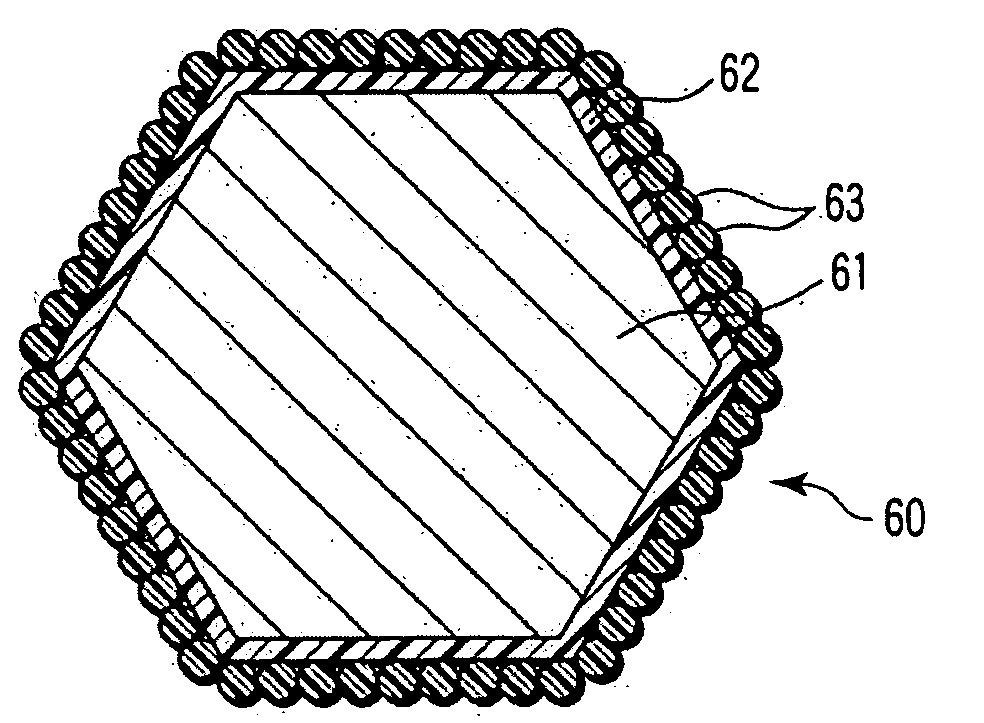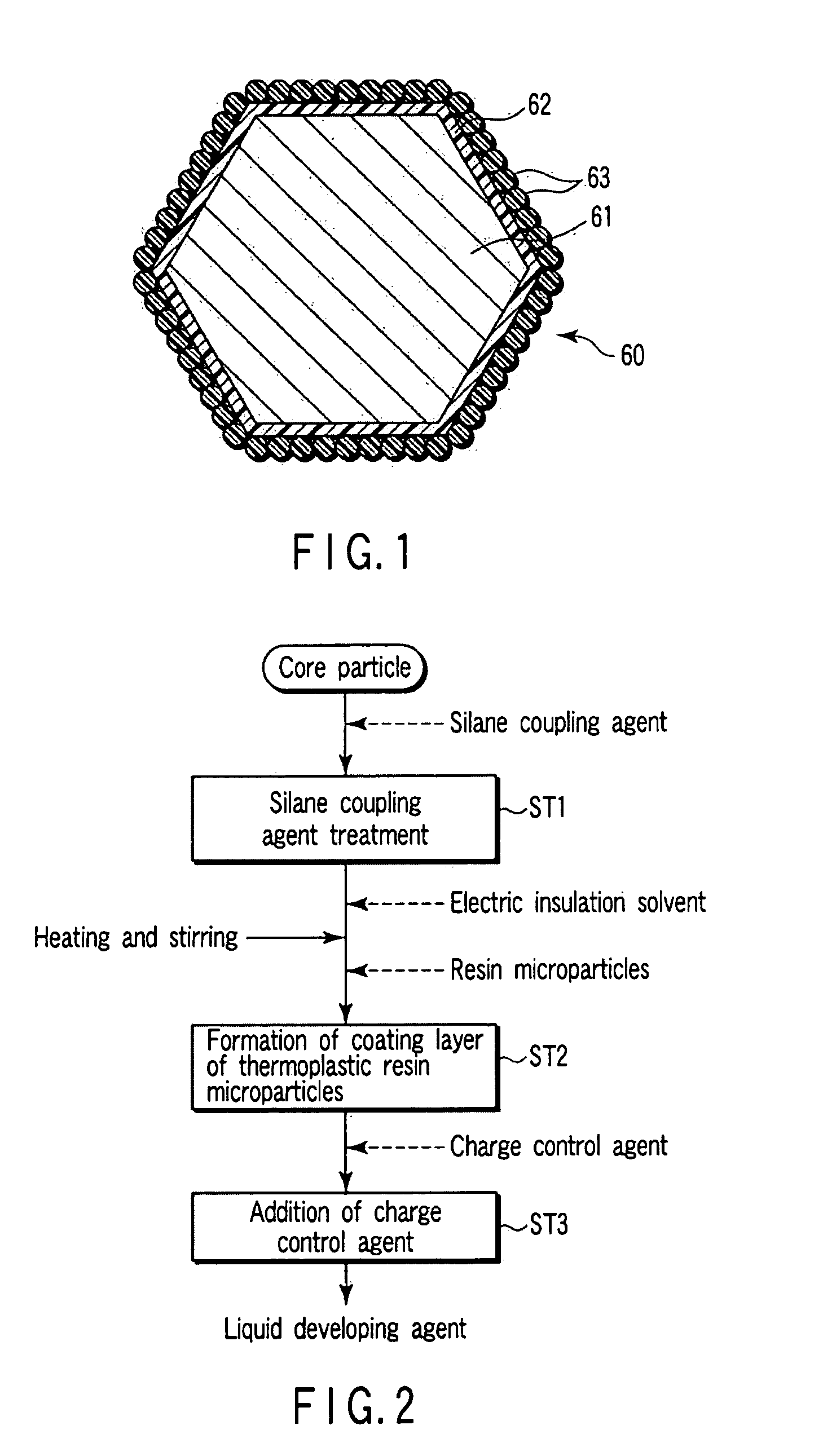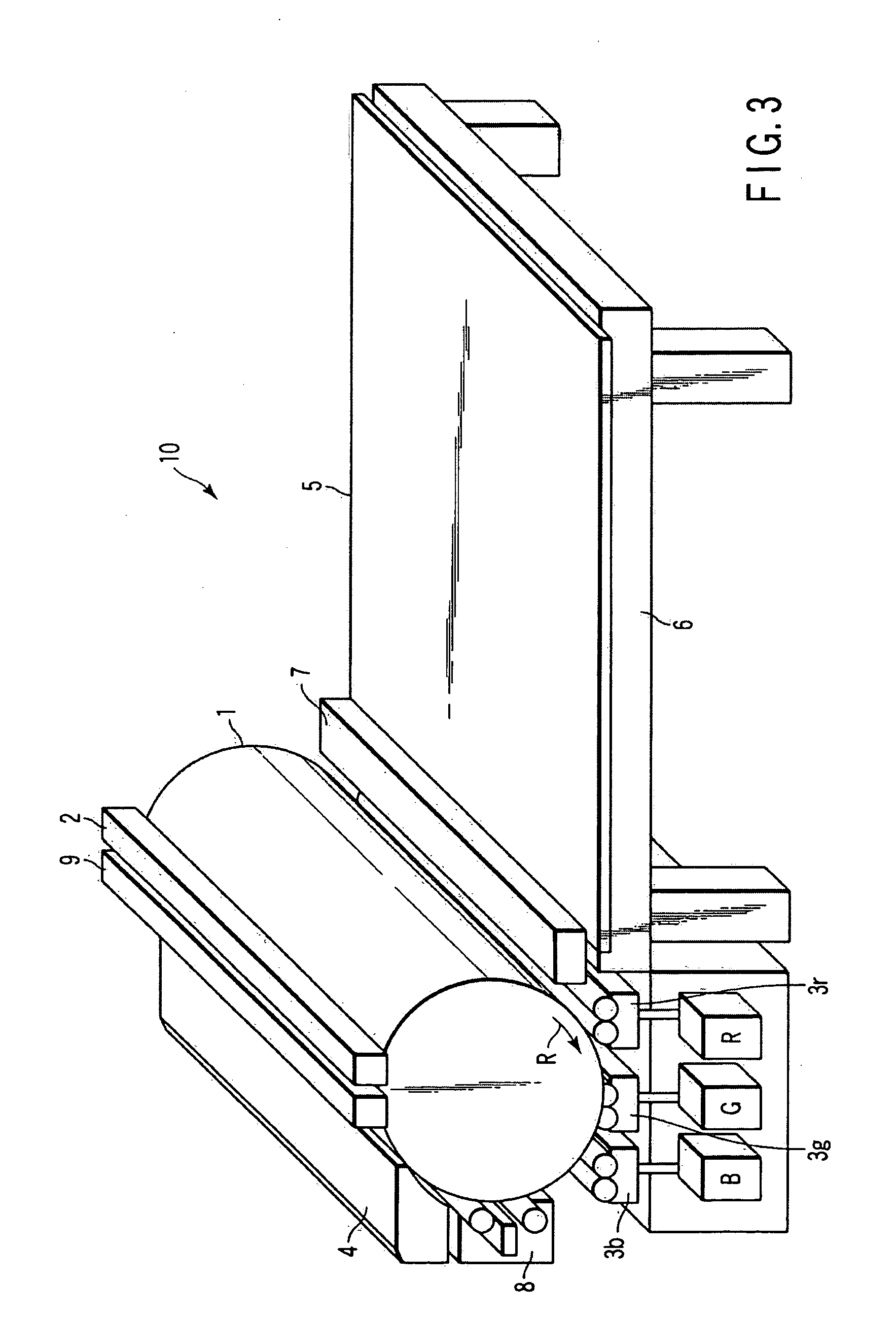Liquid developing agent, method of producing the same and method of producing display device
- Summary
- Abstract
- Description
- Claims
- Application Information
AI Technical Summary
Benefits of technology
Problems solved by technology
Method used
Image
Examples
example 1
[0218]700 g of an aqueous solution of a silane coupling agent (KBM-603, manufactured by Shin-Etsu Chemical Co., Ltd.) was prepared in a 1000 ml beaker, into which 50 g of Y2O2S:Eu type red emission fluorescent body particles (average particle diameter: 4.5 μm, specific gravity: 5.0) was poured and stirred for 2 hours. Then, the reaction mixture was filtered and dried at 120° C. for 3 hours in a drying furnace to carry out silane coupling treatment, followed by screening. Next, 180 g of an insulation hydrocarbon solvent (Isoper L, manufactured by Exxon Kagaku) having a boiling point range of 191 to 205° C. was poured into a 500 ml separable flask and next, 2 g of acryl microparticles (MP4009, manufactured by Soken Chemical & Engineering Co., Ltd.) having a specific gravity of 1.0 and 18 g of Y2O2S:Eu type red emission fluorescent body particles which had been subjected to silane coupling treatment were poured into the flask. Then, the relay temperature regulating unit used as the tem...
example 2
[0225]700 g of an aqueous solution of a silane coupling agent (KBM-603, manufactured by Shin-Etsu Chemical Co., Ltd.) was prepared in a 1000 ml beaker, into which 50 g of ZnS:Cu, Al type green emission fluorescent body particles (average particle diameter: 5.6 μm, specific gravity: 4.1) was poured and stirred for 2 hours. Then, the reaction mixture was filtered and dried at 120° C. for 3 hours in a drying furnace, followed by screening. Next, 180 g of an insulation hydrocarbon solvent (Isoper L, manufactured by Exxon Kagaku) having a boiling point range of 191 to 205° C. was poured into a 500 ml separable flask and next, 2 g of acryl microparticles (MP4009, manufactured by Soken Chemical & Engineering Co., Ltd.) having a specific gravity of 1.0 and 18 g of ZnS:Cu, Al type green emission fluorescent body particles which had been subjected to silane coupling treatment were poured into the separable flask. Then, the relay temperature regulating unit used as the temperature controller w...
example 3
[0229]700 g of an aqueous solution of a silane coupling agent (KBM-603, manufactured by Shin-Etsu Chemical Co., Ltd.) was prepared in a 1000 ml beaker, into which 50 g of ZnS:Ag, Al type blue emission fluorescent body particles (average particle diameter: 5.6 μm, specific gravity: 4.1) was poured and stirred for 2 hours. Then, the reaction mixture was filtered and dried at 120° C. for 3 hours in a drying furnace, followed by screening. Next, 180 g of an insulation hydrocarbon solvent (Isoper L, manufactured by Exxon Kagaku) having a boiling point range of 191 to 205° C. was poured into a 500 ml separable flask and next, 2 g of acryl microparticles (MP4009, manufactured by Soken Chemical & Engineering Co., Ltd.) having a specific gravity of 1.0 and 18 g of ZnS:Ag, Al type blue emission fluorescent body particles were poured into the flask. Then, the relay temperature regulating unit used as the temperature controller was set to 100° C. and the mixture was stirred by the stirrer under...
PUM
 Login to View More
Login to View More Abstract
Description
Claims
Application Information
 Login to View More
Login to View More - Generate Ideas
- Intellectual Property
- Life Sciences
- Materials
- Tech Scout
- Unparalleled Data Quality
- Higher Quality Content
- 60% Fewer Hallucinations
Browse by: Latest US Patents, China's latest patents, Technical Efficacy Thesaurus, Application Domain, Technology Topic, Popular Technical Reports.
© 2025 PatSnap. All rights reserved.Legal|Privacy policy|Modern Slavery Act Transparency Statement|Sitemap|About US| Contact US: help@patsnap.com



